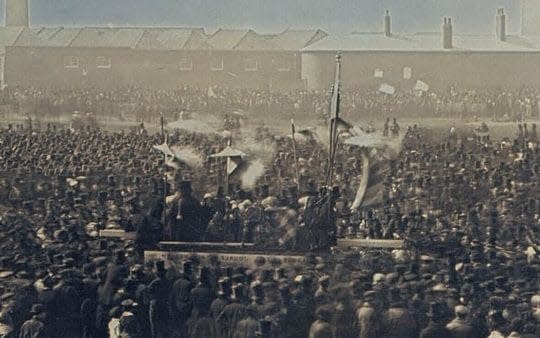Questor: why have Hargreaves’ shares fallen for two years? Modern-day chartists have the answer

To a historian, a “chartist” is someone who supported the campaign for a reformist “people’s charter” in the mid-19th century; to a modern-day investor it’s someone who hopes to get an edge by studying share price graphs.
Questor would not claim to be a full-blooded chartist (in the latter sense) but does think that on occasion there is something to be learned from the shape of these graphs, which is why we publish them with all our tips.
What can we say about the share price chart of Hargreaves Lansdown, the “investment shop”, over the past five years?
If we iron out the short-term swings, it rose briskly until mid-2019 and then went into reverse. As a result the shares are no higher today than they were in November 2017, almost four years ago. Over that period sales have risen smartly, from £448m in the year to June 2018 to £631m this year, and profits have followed suit (£292m before tax in 2018; £366m this year).
Why does the share price graph not follow the rising trajectory of sales and profits? Questor’s two-word answer is: Neil Woodford. That share price peak in mid-2019 came just before the announcement that trading in his flagship fund had been suspended, the biggest bombshell to hit the fund management world in years.
The Woodford collapse may no longer be in the headlines every day but the aftershocks are still being felt. The idea that the way to get rich as a private saver is to identify “star” fund managers is on the wane; the entire concept of active fund management, which was already under pressure from cheap passive funds that few humans seemed able to beat, took another knock.
Hargreaves, as a company that promoted active management, star managers and Woodford in particular, was especially exposed. This at least is how the City seems to see things. Hargreaves’ customers, to judge by their behaviour, beg to differ.
In the year to June 2018 they numbered 1.1m; now there are 1.6m. At the end of the financial year to June 2020, when any exodus of customers disgusted by the Woodford connection would have taken place, the company had 1.4m. In 2018 they entrusted Hargreaves with £91.6bn; that total had grown to £104bn in June last year, when coronavirus had wreaked havoc with share prices, and now stands at £136bn.
Of course we don’t know how many customers it would have now if Woodford hadn’t happened, and must acknowledge some of its customers signed on in the stock-buying boom of last year’s lockdowns; those clients were probably younger and, as keen traders in individual stocks, were probably less bothered about Hargreaves’ involvement with fund managers.
Worries about inflation and about the switch from “growth” to “value” stocks are also likely to have weighed on Hargreaves’ share price. But this is a company that is able to support growing numbers of customers, and their assets, from a largely fixed cost base and make high returns on capital and pots of cash in the process.
Sooner or later big investors will forget Woodford and start to focus on the numbers again. Hold.
Questor says: hold
Ticker: HL.
Share price at close: £15.75
Update: Admiral
We tipped the insurer in March, since when the shares have lost 4.7pc. But Simon Young of Axa Investment Managers, who holds the stock in his UK Equity Income fund, says he is not worried.
“We still hold Admiral,” he told Questor. “Nothing has fundamentally changed since March: it continues to gain customers by offering great prices, innovative products and excellent service. That it gained more than 500,000 motor insurance customers in the UK alone over the last 12 months is testament to this. Consumers love low prices.
“Numbers for the first half of 2021 were really strong. Profits rose by 75pc and the interim dividend was raised by 63pc.”
He puts share price weakness down to concerns about higher losses as more cars return to the roads, the higher cost of repairs from industry-wide supply chain problems and legal reforms.
But he adds: “Truth be told these are the normal ebb and flow of motor insurance. There is always something for the analysts to worry about. I can’t see why conditions will be so radically different in the future to those that have allowed Admiral to do so well in the past.” Hold.
Questor says: hold
Ticker: ADM
Share price at close: £30.47
Read the latest Questor column on telegraph.co.uk every Sunday, Tuesday, Wednesday, Thursday and Friday from 5am.
Read Questor’s rules of investment before you follow our tips.

 Yahoo Finance
Yahoo Finance 